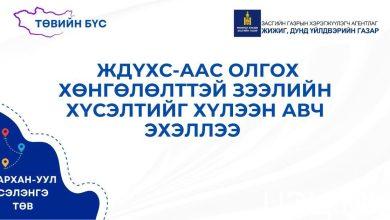Comprehending Non-HDL Cholesterol: A Comprehensive Guide
Cholesterol is an important material that your body needs to function appropriately. However, having high levels of particular types of cholesterol can enhance your risk of heart problem and stroke. One such tonerin sastāvs kind is non-HDL cholesterol, which plays a significant duty in examining your cardiovascular wellness. In this short article, we will certainly look into what non-HDL cholesterol is, exactly how it is determined, and its implications for your total health.
What is Non-HDL Cholesterol?
Non-HDL cholesterol describes the amount of all cholesterol fragments in your blood stream, omitting the “good” high-density lipoprotein (HDL) cholesterol. Unlike HDL cholesterol, which aids get rid of excess cholesterol from your arteries, non-HDL cholesterol includes low-density lipoprotein (LDL) hairex peru inkafarma cholesterol, very low-density lipoprotein (VLDL) cholesterol, and remnants of other lipoproteins.
Raised degrees of non-HDL cholesterol have actually been highly connected with an enhanced danger of atherosclerosis, a problem defined by the build-up of plaque in the arteries. This build-up can ultimately lead to obstructions, decreasing blood flow as well as raising the possibility of cardiac arrest or strokes.
When analyzing your cholesterol degrees, health care specialists commonly focus on non-HDL cholesterol as an extra accurate predictor of cardio danger than LDL cholesterol alone. By taking into consideration all the cholesterol fragments that contribute to plaque development, non-HDL cholesterol gives a much more detailed evaluation of your total lipid profile.
- LDL Cholesterol: Called “poor” cholesterol, LDL cholesterol adds to the development of plaque in the arteries. It is a significant element of non-HDL cholesterol.
- VLDL Cholesterol: Extremely low-density lipoprotein cholesterol is responsible for carrying triglycerides with the bloodstream. It likewise adds to non-HDL cholesterol levels.
- Residues: After your body eliminates fatty substances from triglyceride-rich lipoproteins, remnants are left behind. These remnants likewise add to non-HDL cholesterol.
Determining Non-HDL Cholesterol
Determining non-HDL cholesterol is an uncomplicated procedure that entails a basic blood examination. This examination is commonly carried out after a duration of fasting to obtain precise outcomes. The blood example accumulated will certainly be used to gauge your complete cholesterol, HDL cholesterol, and triglycerides. Non-HDL cholesterol is then calculated by subtracting the HDL cholesterol worth from the total cholesterol value.
Non-HDL cholesterol levels are expressed in milligrams per deciliter (mg/dL) or millimoles per liter (mmol/L). Typically, lower non-HDL cholesterol levels are taken into consideration healthier, as they suggest a lowered risk of cardio occasions.
It is very important to keep in mind that non-HDL cholesterol degrees can differ based on age, sex, as well as other elements. Your healthcare provider will examine your non-HDL cholesterol along with other danger aspects to determine your total cardio danger and also overview any necessary therapy plans.
Healthy non-HDL cholesterol degrees need to normally fall below 130 mg/dL (3.37 mmol/L) in a lot of individuals. Nevertheless, for individuals with particular wellness problems or a higher threat of heart disease, an extra strict target of below 100 mg/dL (2.59 mmol/L) might be advised.
The Implications of High Non-HDL Cholesterol
Having elevated non-HDL cholesterol levels can substantially boost your risk of establishing heart disease. The excess cholesterol in your bloodstream can cause the development of plaque, tightening the arteries and also preventing blood circulation to important body organs.
If left unattended, high non-HDL cholesterol can lead to numerous health and wellness difficulties, consisting of:
- Coronary Artery Condition (CAD): The accumulation of plaque in the coronary arteries can restrict blood flow to the heart, creating chest discomfort, cardiovascular disease, or other coronary artery-related problems.
- Stroke: When plaque accumulation occurs in the arteries providing blood to the mind, it can lead to a stroke, which can trigger temporary or permanent neurological damage.
- Peripheral Artery Illness (PAD): Reduced blood circulation to the legs and also various other extremities can cause pain, feeling numb, as well as difficulty strolling.
Reducing non-HDL cholesterol levels is vital to handling your cardio health. Way of living adjustments, such as embracing a heart-healthy diet, raising exercise, and also stopping cigarette smoking, can help in reducing non-HDL cholesterol degrees. Sometimes, medicine, such as statins, might be suggested to aid lower cholesterol levels and also decrease the danger of cardio occasions.
In Conclusion
Non-HDL cholesterol gives important insights into your cardio wellness by taking into consideration all cholesterol fragments that contribute to plaque formation. By determining non-HDL cholesterol degrees and also understanding their ramifications, you can take positive actions to handle your cardiovascular risk as well as live a heart-healthy life. Regular testings, lifestyle alterations, as well as ideal clinical treatments can help you keep optimum non-HDL cholesterol degrees as well as decrease the possibility of cardiovascular disease or stroke.
Bear in mind to consult your healthcare provider for individualized advice and also assistance based on your private health profile.




